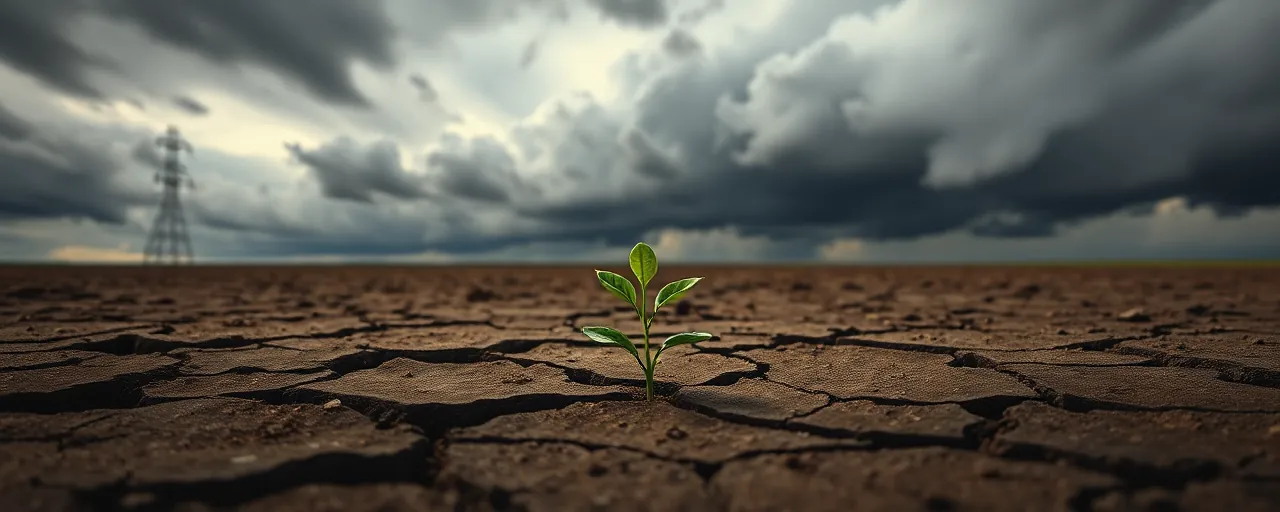A State Under Siege
Texas is burning, not with flames but with the relentless grip of drought. Fields lie barren, reservoirs dwindle, and farmers stare down losses topping $3.4 billion in 2024 alone. Cotton, wheat, and livestock industries reel, with the closure of the state’s last sugar mill costing 500 jobs and $100 million in economic damage. This isn’t just a dry spell; it’s a crisis threatening the heart of Texas’ economy and way of life. Yet, in the face of this hardship, the Lone Star State refuses to kneel.
Governor Greg Abbott, with a stroke of his pen on April 22, 2025, renewed a disaster proclamation covering over 70 counties, from El Paso to Nueces. This isn’t mere bureaucracy. It’s a battle cry, unleashing every available state resource to protect Texans from the drought’s chokehold. The proclamation, rooted in the Texas Division of Emergency Management’s stark assessments, signals a commitment to action over despair, prioritizing the people who feed the nation.
Contrast this with the hand-wringing of federal bureaucrats and climate alarmists who peddle doom or push one-size-fits-all mandates. Their solutions often ignore the realities of Texas’ vast landscapes and independent spirit. While they lecture about carbon footprints, Texas farmers are culling herds and praying for rain. The state’s response, grounded in local know-how, proves that resilience, not rhetoric, will see us through.
This drought, among the worst since the 1950s, tests Texas’ mettle. But history shows we’ve faced worse and emerged stronger. The question isn’t whether Texas will survive; it’s how we’ll redefine strength in the face of adversity.
The Economic Toll: Farmers Pay the Price
The numbers are brutal. In 2024, drought and heat obliterated $1.8 billion in cotton, $768 million in forage, and $257 million in wheat. The Rio Grande Valley’s citrus and vegetable growers, starved of irrigation, lost nearly $1 billion the year before. Cattle ranchers, with herds at their lowest since 1968, face feed costs and water shortages that force heartbreaking sales. These aren’t abstract figures; they’re the livelihoods of families who’ve tilled this land for generations.
The ripple effects hit hard. Rural communities, from Lubbock to Zapata, see businesses shutter and jobs vanish. The closure of the sugar mill in South Texas didn’t just kill jobs; it gutted a region’s economic core. Compare this to the 2011 drought, when losses hit $7 billion and corn production plummeted 46%. Today’s crisis, while severe, meets a Texas better prepared, thanks to state-led innovation and grit.
Some point to federal crop insurance, with payouts exceeding $1 billion annually, as a lifeline. But it’s a bandage, not a cure. Farmers don’t want handouts; they want water and the freedom to work their land. Governor Abbott’s proclamation cuts red tape, suspending regulations that stifle emergency aid. This is government at its best: clearing the way for Texans to solve their own problems, not adding layers of interference.
Meanwhile, voices from Washington and beyond push climate policies that burden farmers with costly regulations while offering little practical relief. Their focus on distant targets ignores the immediate pain of Texas producers. The state’s approach—empowering locals, not lecturing them—stands as a rebuke to top-down control.
Innovation Over Ideology
Texas isn’t waiting for miracles. The state is doubling down on conservation strategies that blend tradition with cutting-edge technology. Irrigation, which gulps 53% of Texas’ water, is being retooled with metering, efficient systems, and canal linings that could save 900,000 acre-feet in the Rio Grande Valley alone. Farmers are planting drought-tolerant sorghum and milo, while extension services promote cover crops and reduced tillage to preserve soil moisture.
Desalination plants in Corpus Christi and El Paso are turning brackish water into a lifeline. Rainwater harvesting, once a niche idea, is gaining traction as a decentralized solution. Lawmakers are eyeing a $2.5 billion investment in a statewide water grid to move water from wet to dry regions, a bold plan that prioritizes self-reliance over federal aid. These aren’t pipe dreams; they’re practical steps rooted in Texas’ history of solving big problems.
Contrast this with the fearmongering of climate activists who demand sweeping societal overhauls while dismissing local ingenuity. Their narrative—that drought is solely a climate change problem—ignores the cyclical nature of Texas’ weather and the state’s proven ability to adapt. The 1950s drought crushed half the farming industry, yet Texas rebuilt. Today’s megadrought, worsened by a 2°F temperature rise since 1900, is daunting, but Texas’ response is a masterclass in pragmatism.
A Call to Stand Tall
Texas faces a defining moment. The drought’s grip tests our resolve, but Governor Abbott’s leadership, backed by state agencies and local communities, charts a path forward. By mobilizing resources, slashing bureaucratic hurdles, and investing in conservation, Texas is writing a playbook for resilience that other states can only envy. This isn’t about denying challenges; it’s about meeting them head-on with solutions that work for Texans.
The alternative—ceding control to distant regulators or banking on empty promises—would betray the spirit of this state. Texas thrives because it trusts its people, from farmers to engineers, to tackle crises with ingenuity and determination. As the drought persists, we’ll protect our land, our economy, and our future, not because it’s easy, but because it’s who we are.
